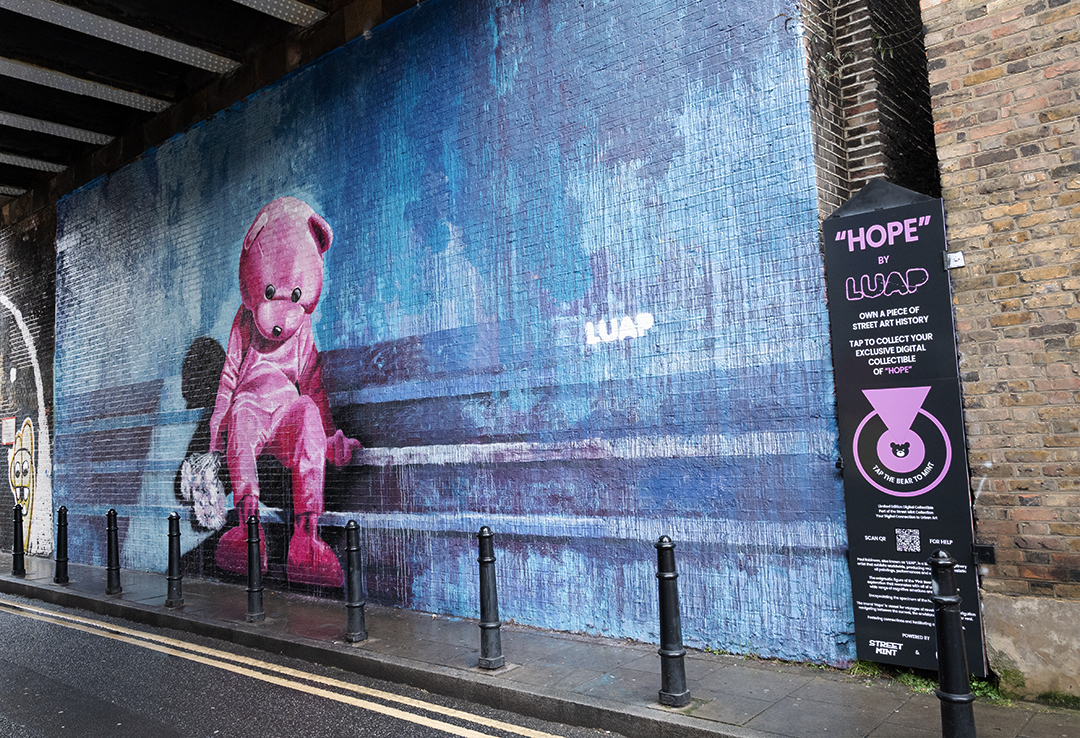A new epoch of street art looms and dinosaurs are going to struggle. Three or four years ago the pod-o-sphere was abuzz with earnest tech bros going “yeah, NFTs are going to transform street art” and podcasters saying “ok, again but a little bit slower please.” Just when you thought it was safe not to learn what NFTs were, a means of using the blockchain to confer and record “ownership” of street art emerges.
Streetmint (FAQ) in conjunction with Trix from Outside The Zone have with the blessing of a small group of street artists set up a number of chips next to some street art. You can’t miss them, you may not understand them! You waft your phone over the chip, your phone apparently powers the chip causing it to transmit a notification to your phone, it’s called NFC or Near Field Communication. I suspect my old person’s Oyster card works on the same idea.
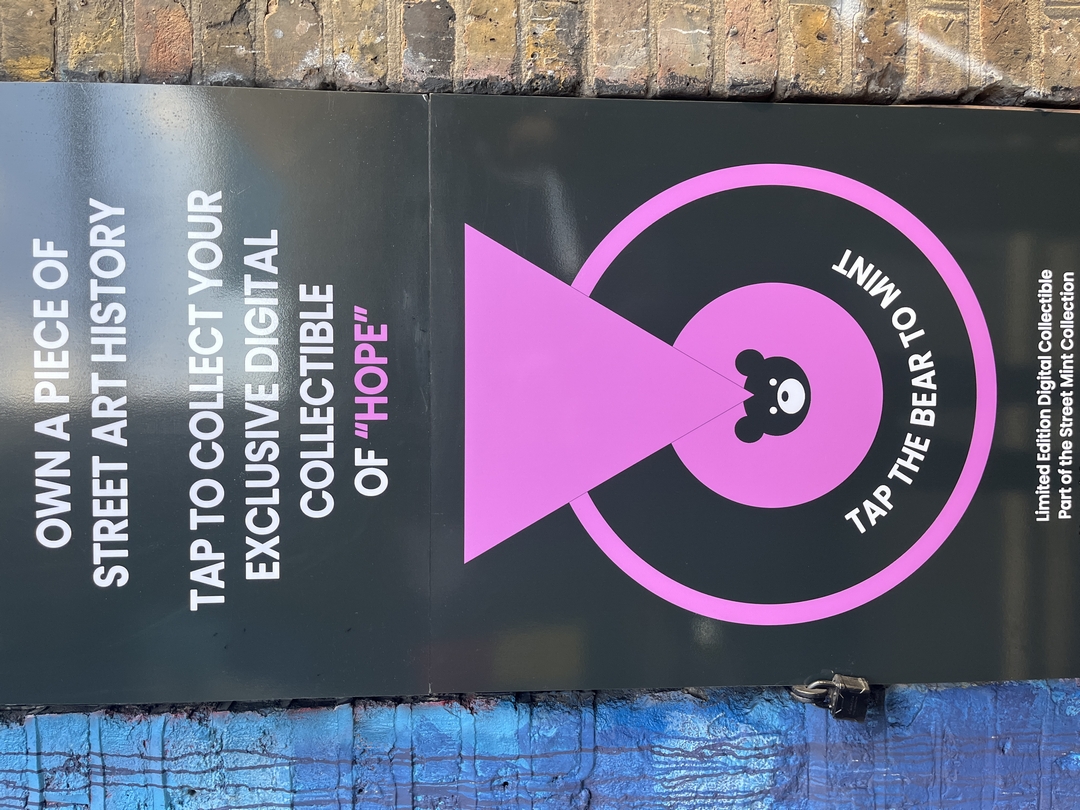
Pop your email address into a box that appears on your phone screen and you then receive an email which allows you to claim your digital coin. Your digital coin then goes into a digital wallet. Got one of those? Checked your digital wallet recently?
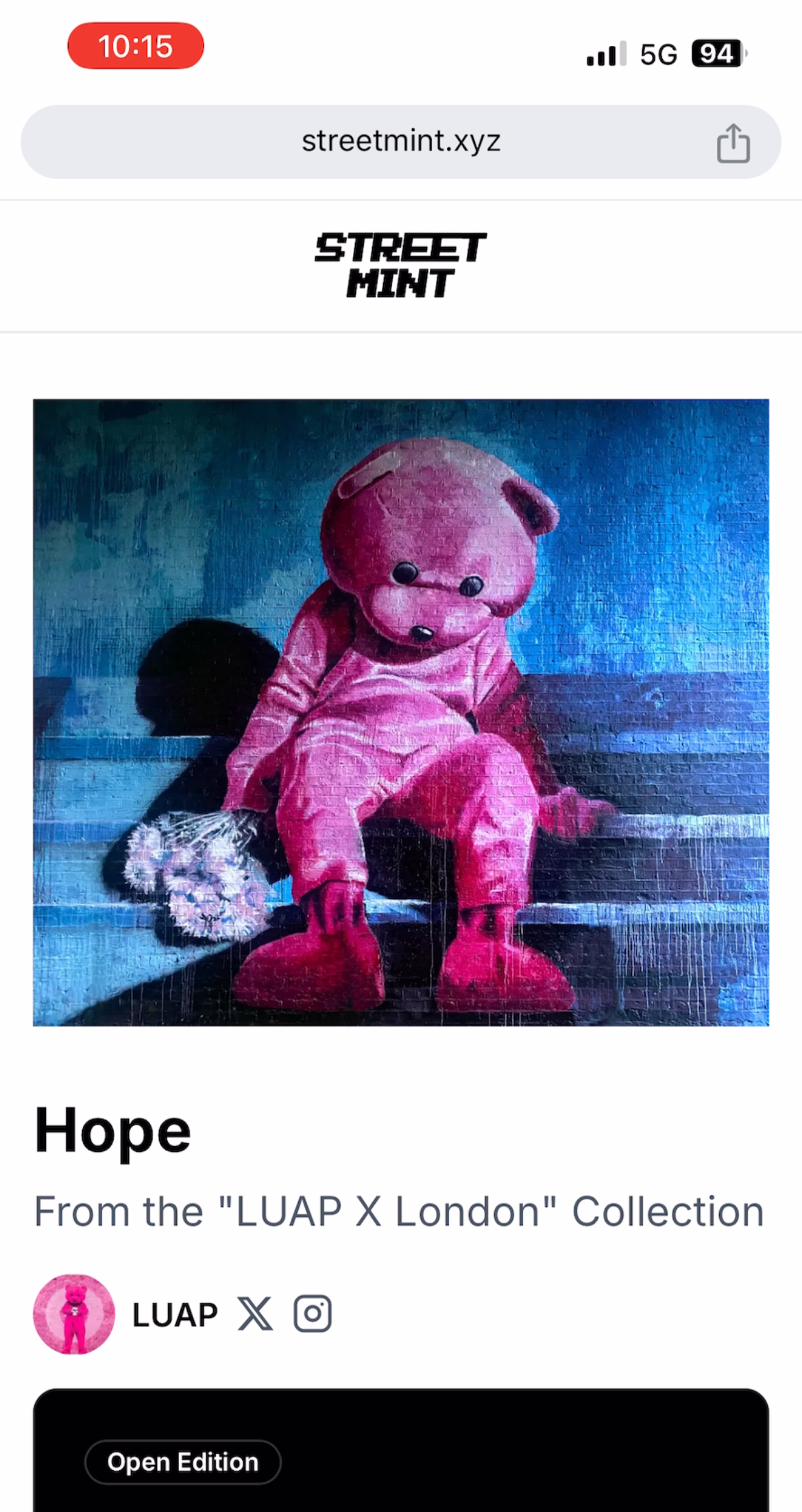
There endeth the tech, I think, from here forward it’s magic or at least mystery.
You now “own” a piece of street art, or as the hyperbole on the wall has it you own a piece of street art history. You can’t have the street art, you don’t own the physical thing on the wall, you own something that digitally represents or symbolises the street art. It’s intangible. The term used in the instructions is “Digital Collectible”. It’s part of the Streetmint collection and you can only “mint” it by going to the minting station on site on the street.

The digital token registered to your ownership is “scarce” because only people who rubbed the wall with their phones on that day were able to bring that digital artefact into being – that’s the “minting” moment. Once the chip is removed, crushed, deactivated or whatever makes minting machines die happens, then no more digital coins can be created. With scarcity comes value, assuming that a demand for that token emerges and why shouldn’t it for popular art.
It’s like a game. Present people with a mission, such as be at a particular wall with within a small availability period, make it free too, fire them with enthusiasm to collect these intangible owbership cyphers and people will play. And if people want it but can’t make the qualifying conditions they can still have it, they just got to find a willing seller, establish an agreement on price and hey presto, the thing acquires value. Somehow the blockchain learns that the digital thing is now transferred to the buyer’s digital wallet from the seller’s.
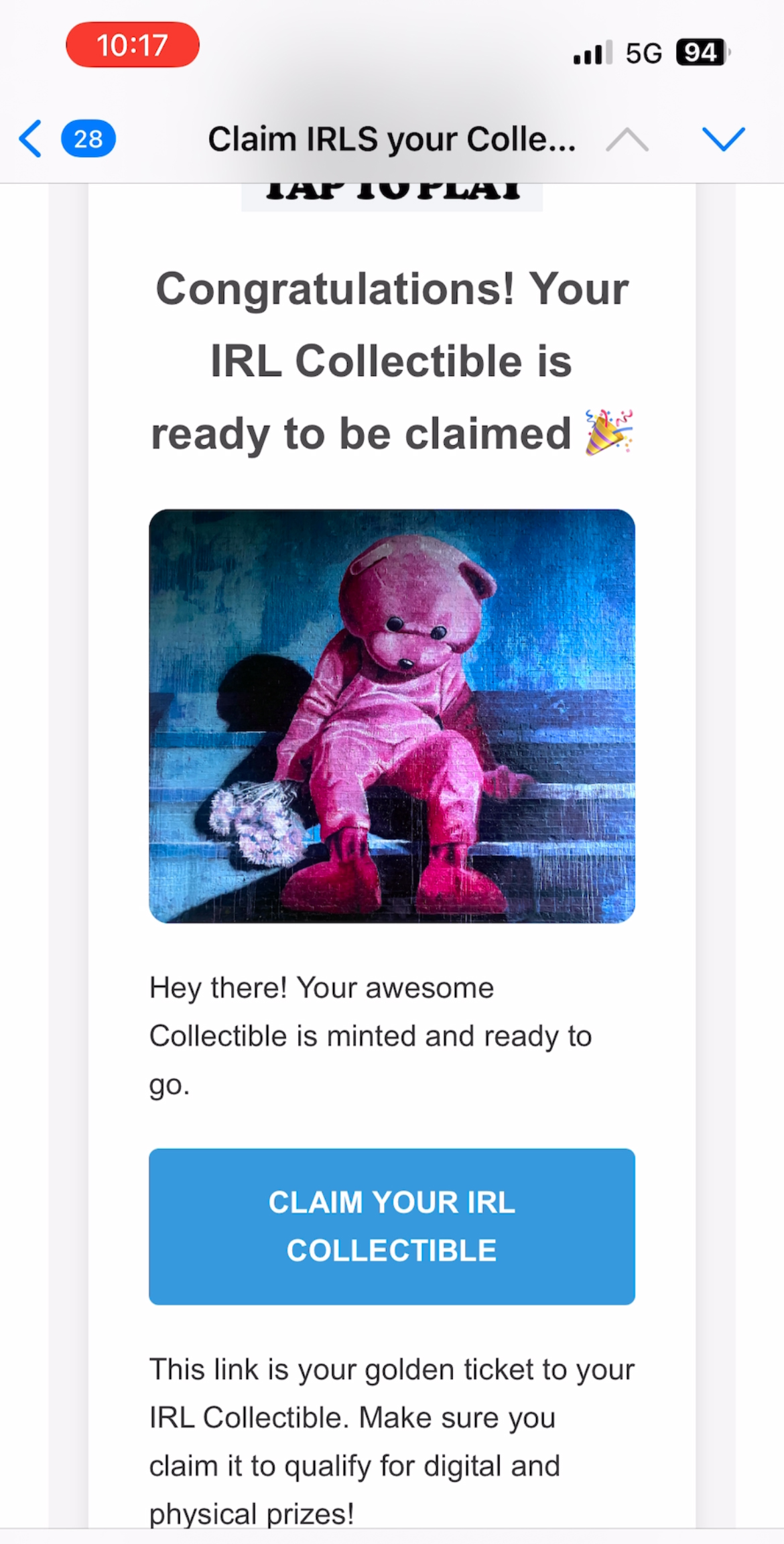
Perhaps it is not dissimilar to the game Flash Invader which awards the diligent and obsessed with points for “flashing” street art by Space Invader. That game itself is not a million miles from the technology of Pokemon Go, though Flash Invader pre-dated that by three years.
People will collect these things. It’s a bit of a leap from the days of stamp collections – I’m constantly told at home I do not need 20 years of art show catalogues, stickers and flyers which may strictly be true but collecting is still a thing or to be even more precise, the expression the completist urge is ever present its just now you need the tech, this blockchain/wallet stuff (I am committed to rationalising/downsizing but no deadline has been imposed). So long as there are new digital collectibles and collectors who need them all, there will be demand and the organisers hope, a craze. Something more tongue friendly than “Digital Collectible” would be a good idea!
Did you hear about the guy who wants to buy and mine a whole municipal waste tip in Newport because 15 years ago his ex tossed his computer with his bitcoin wallet now worth zillions on the hard drive. Just pointing out the “rugpull” risk comes in many forms.
Streetmint challenges the nature of our relationship with the street art and the artist, opening a debate about enjoying street art. Is there more than one way to enjoy the creativity on the walls? Is there a correct way? Will the idea of owning something that is virtual and symbolic rather than an actual art work take hold? Lest we forget street art is essentially temporary, is it a good thing that the online artefact may last long after the original piece has disappeared?
Maybe I am hooked on notions of street art enjoyment that are outdated…admiring it for real on the streets, enjoying the artist’s technique, the spraycan skills, the message and meaning, the art’s interaction with its environment and other artworks. Streetmint made the point that there is now a generation for whom it is perfectly natural to pay real money to own a power or a virtual asset which they utilise in a virtual universe. Virtual ownership is a thing, tech has facilitated huge changes to the old way of thinking.
Curiously, the scarcity and value of the token is not impacted by the availability of photographs, a bit like someone who was willing to pay $69million to buy the Beeple piece at auction knew that everyone else could get the same visual enjoyment viewing the jpg for free online. Art photography is about memory, understanding, reference and comparison (not an exhaustive list), quite different to the function of art ownership by digital collectible. Perish the thought that street art photography should become an impediment to digital collectible value, for then it would not be hard to imagine artists obstructing or frustrating photography.
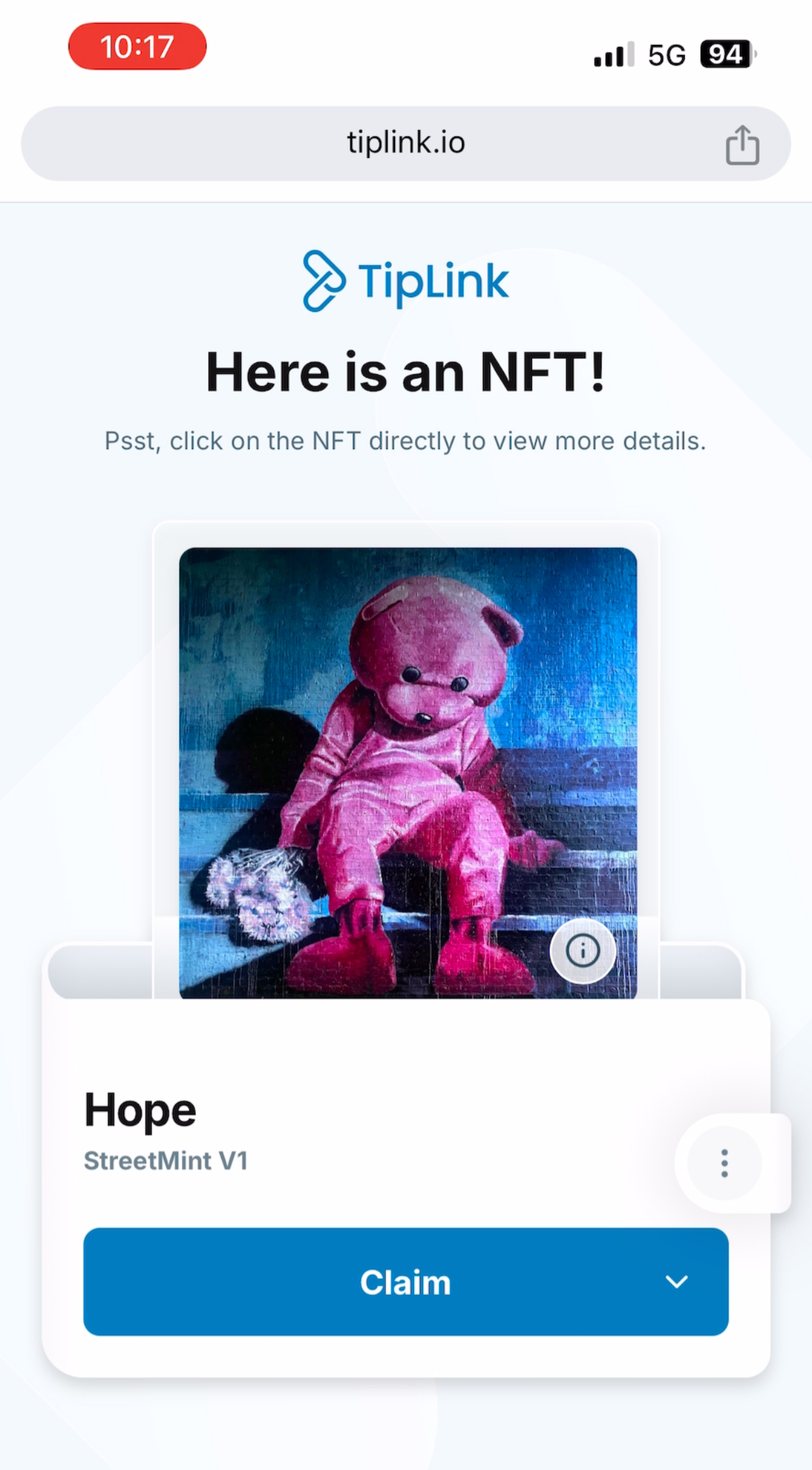
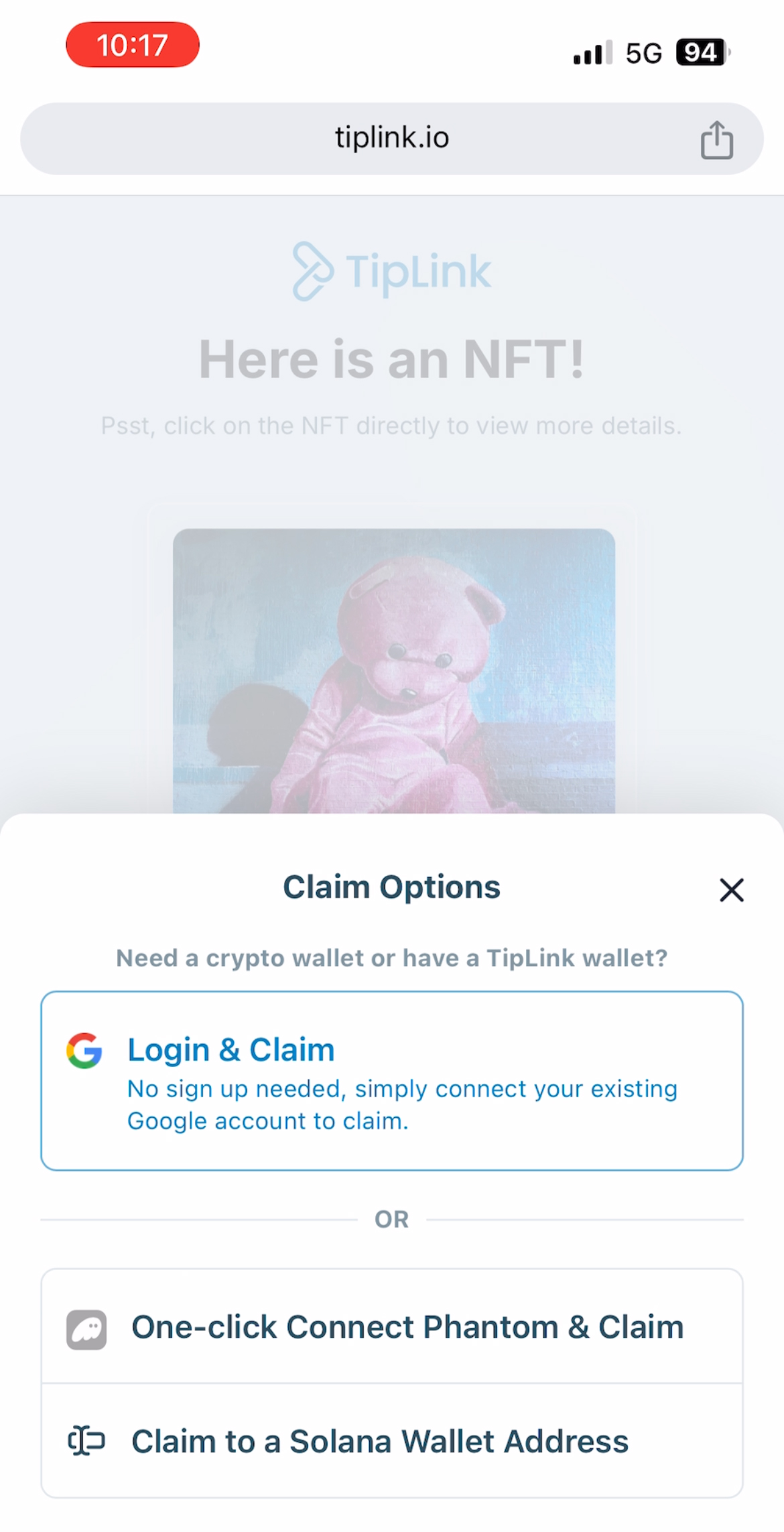
In the old world industries were set up to ensure you owned your records and cassettes, they tried all kinds of lumpy technology to crush the sharing of copies. Now, not withstanding the vinyl revival, the notion of actually owning the record is so prehistoric, the streaming generation would bring you a cup of cocoa and check the blanket isn’t slipping off your knees if you try showing off your record collection. On the other hand, for centuries art has been freely available to all in galleries, museums, churches, bars and on the streets without owning it, yet future engagement is to be enhanced through ownership of intangible signifiers of art. Generational attitudes to ownership are flowing in opposite directions.
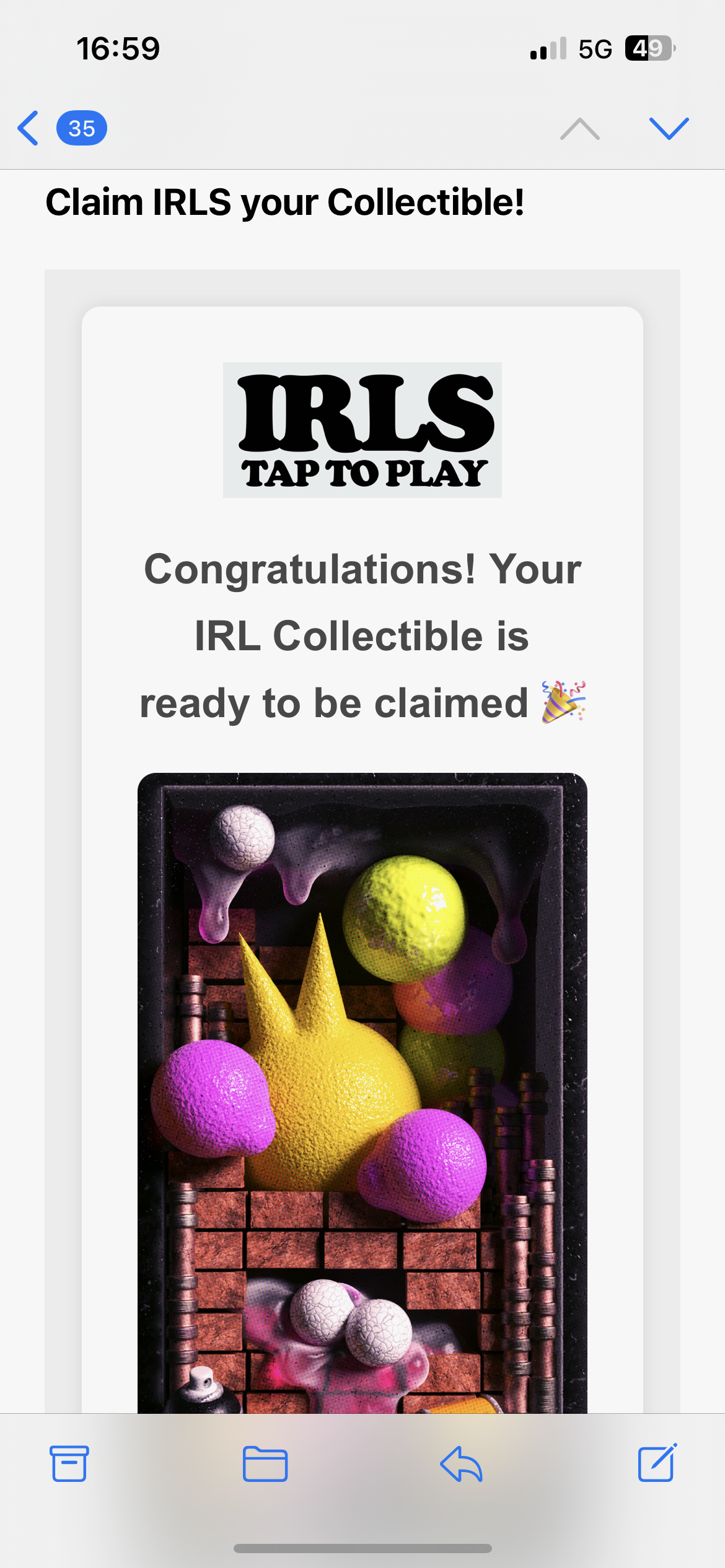
Follow the money they say in detective movies. One of the oft mentioned benefits of NFTs was that the original artist would receive a percentage of any future secondary market sales proceeds, this was hard wired into the blockchain technology for changing ownership. The secondary market is the auction houses and private sales, rather than the initial sale of the new art which is primary market. A little bit of digging revealed that written into the agreement is that the artist gets 2% of future sales, the platform – whatever that is – gets two percent, Streetmint gets 1% and OTZ gets 1%. Viewed another way, artists get 1/3 of the skim on future sales. Artists are never happy, the middle men take too much for doing sod all has been a gripe down the ages but at least in this construct everyone remains motivated!
Forgotten in all the excitement and tech is the underlying art by LUAP, a stunningly beautiful evocation of despair inspired by the Jacques Prevert poem “le désespoir est assis sur un banc” – despair sits on a bench. In the deepest depths of despair the only thing left is hope, hence the title of Luap’s painting and the abject hanging of the head, the flowers barely gripped in the hand, the melancholy rendered in Luap’s spraypaint is soul wrenching.
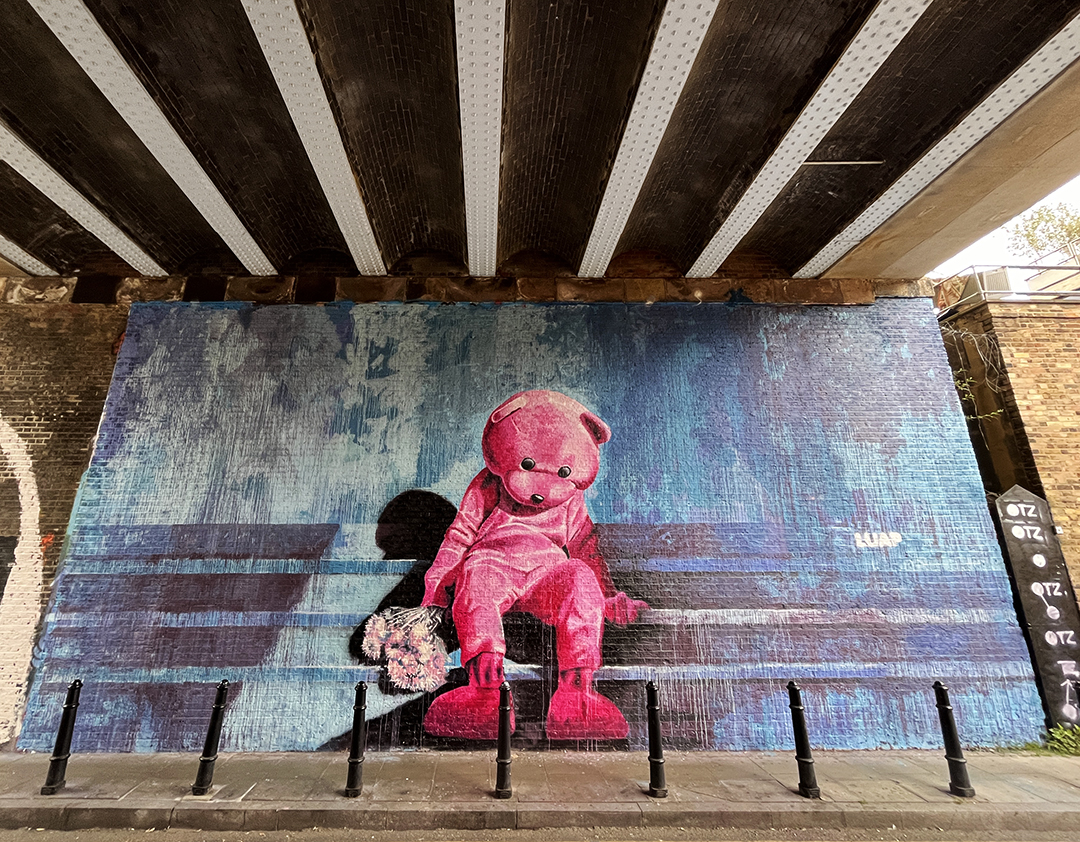
Thanks to that chance meeting I was accidentally first to mint one of these digital collectibles, perhaps it’s a bit unfortunate for these visionaries to have their first baby go to such a street art Luddite and technophobe. NFT street art is now all completely clear apart the bit about Solana and something else called Tiplink and blockchains and there’s a wallet somewhere and the asset acquired for free from the streets is a Digital Collectible but it is also an IRL Collectible (“In Real Life”) or it’s a Digital Coin or it’s an NFT or a piece of street art history (which it says on the board next to the art so it must be true) and it’s a “street art drop”, and that’s before even getting into whether or not the future belongs to proper universally accepted currency or unregulated cyber currency.
The NFT system opens up a mechanism by which the artists can if they wish monetise their actual street art piece. This may have an impact on the motives of street artists, it may affect the mix of artists actively involved in street art. It may even motivate wall owners to limit the availability of their walls to just artists willing to provide a taste of the monetary action. For this launch event all the artists were offering their work as NFTs for free and three were painted last year (on walls curated by OTZ). One speculates that the possibility of being minted as NFTs might not have have been a consideration in the initial creation but in future, the possibility of charging for “ownership” may have a huge impact on what makes it onto the walls.
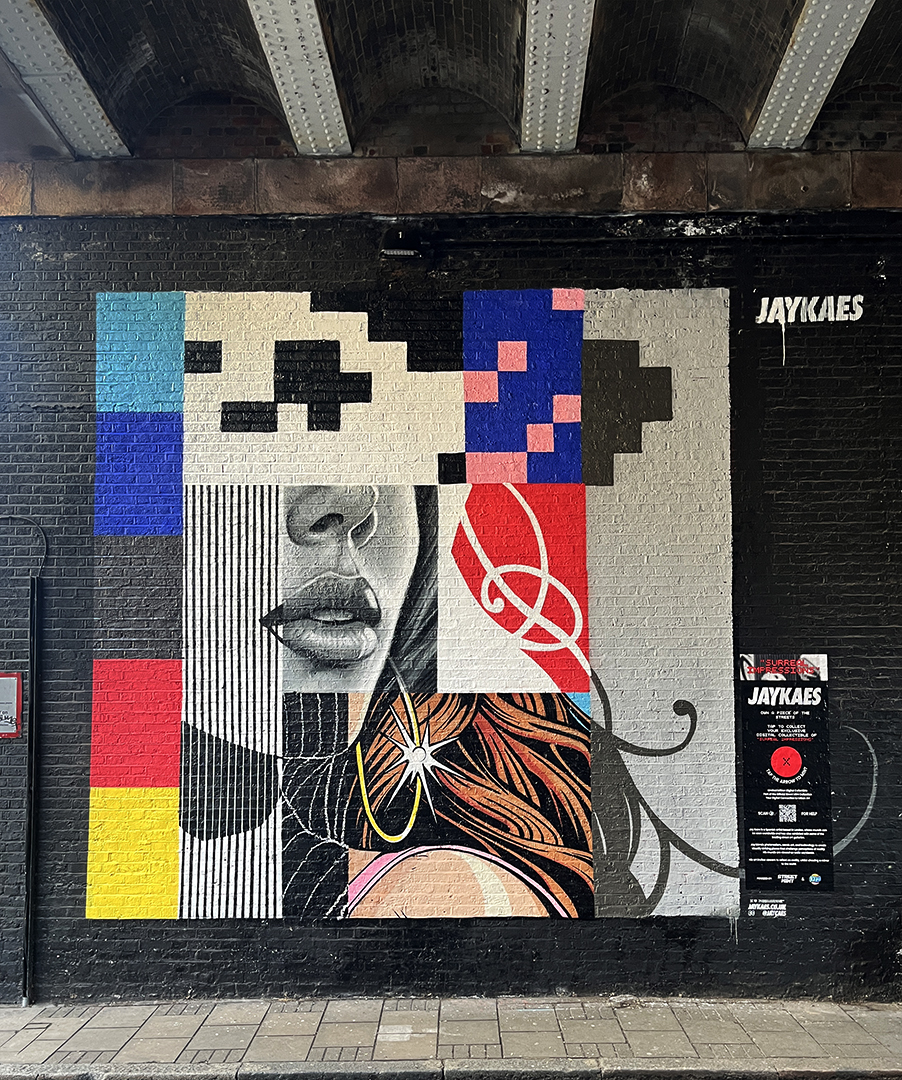
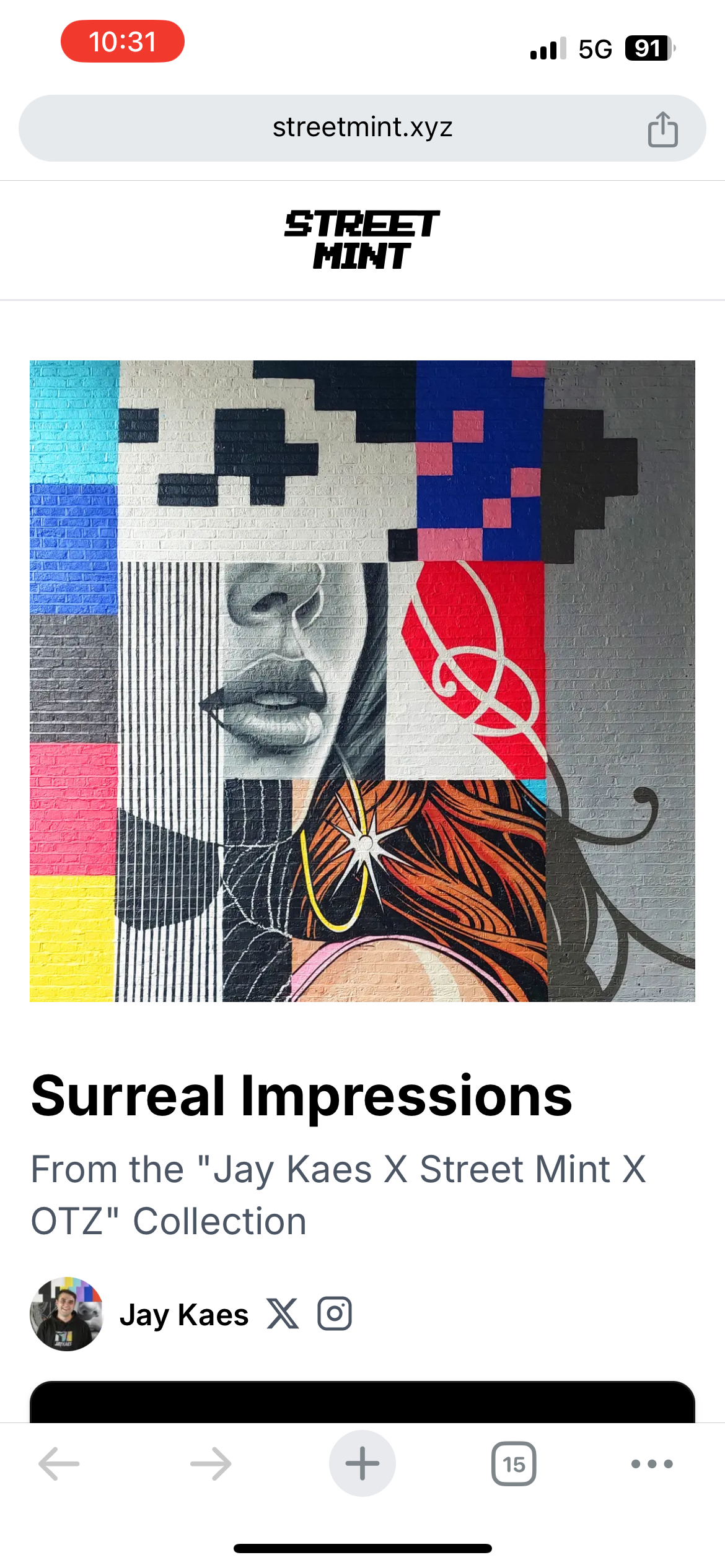
It’s probably a safe bet that for the foreseeable future street artists will continue to paint and paste and sculpt and do all the new exciting things that never cease to stimulate and amaze real world street art fans. Or will Streetmint be this dinosaur’s meteor?

